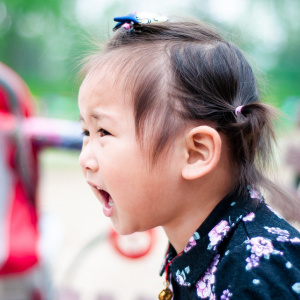Separation Anxiety in Babies and Young Children

Child and adult psychologists believe that pleasant separation experiences in early life act as a sort of psychological vaccine against the anxiety of stressful separations that come later in life. There are normal behaviors that go along with the separation that, if misinterpreted, can lead to discipline and self-identity problems for your children.
Causes
Young children want and need to separate from their parents, but they don’t know how. When encountering a strange situation, infants have to balance their desire to explore with their need to remain attached to the familiar caregiver. It has been found that the more attached or connected a child is early on in infancy to a caregiver, the easier the separation process will be when the time comes.
Separation anxiety can occur in many scenarios. It can appear when you leave the room only for a minute or when you drop your baby off at daycare. As you deal with the screaming and the anxious tears of your child as you try to leave, it is difficult to know exactly what to do to ease the situation. The following do’s and don’ts should help the stressful process.
Don’t
Don’t leave your baby for periods of time that are longer than your child can handle.
This will harm the trust you have been building between you and your infant.
Don’t stay with your child constantly.
It is important that you leave your child periodically during the day. Avoiding the separation process delays the child’s normal pattern of growth and development.
Don’t avoid the separation process.
Although it may be difficult to see your baby upset and anxious, it is necessary that young children are at least exposed to the separation process, even if is only for an hour or so.
Don’t rush the separation.
Make sure you take time to help your child adjust to separation. Failure to do so may lead to a shaky self-image, which leads to insecurity.
Do
Play hiding games like “peek-a-boo.”
As you hide your face or body, the baby has the opportunity to imagine that you exist even though you are out of sight.
Separate gradually.
Allow your baby to separate from you, not always you from your baby. When the child ventures off, allow him time to come back. Reassure him that you still exist. Eventually, the periods of time your baby is separated will be longer than the time he spends reassuring himself.
Vocalize that you are leaving.
By telling your baby “good-bye” and including your baby in the leaving process, you help her know that she can trust you and that you aren’t just running out on her.
Encourage your baby's relationships with other significant adults.
Your child will gradually learn to depend on a variety of people for help.
Substitute your physical presence with voice contact if you are in separate rooms.
When your baby is in another room, talk to him and let him know that you can communicate even when you can’t see each other face-to-face.
Watch for signs of separation anxiety or stress.
There are times when a baby needs to cling. Sometimes children need that one-on-one contact before they can continue on with the process of separating.
 RSS Feed
RSS Feed